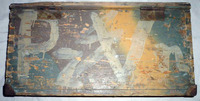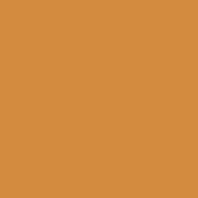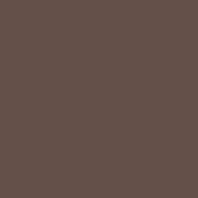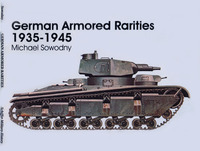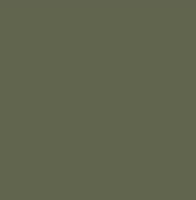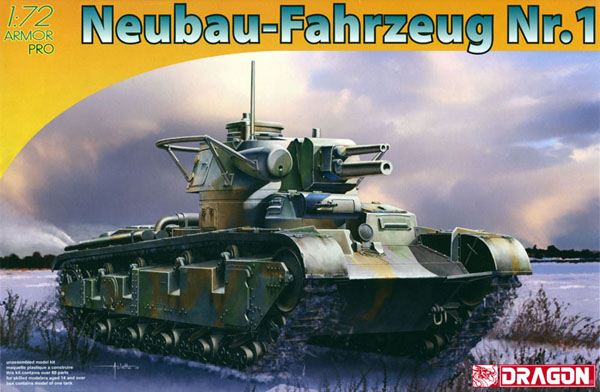
Dragon 1/72 Neubau-Fahrzeug Nr. 1
By Will Perry
Overview
Because the Versailles Treaty prevented Germany from manufacturing armored vehicles, design work on such vehicles was sparse and sporadic in interwar Germany. The projects that did see metal are outlined in this Achtung Panzer article. These designs mostly drew on the World War I experience, and the larger examples were designed around the “Mobile Fortress” model – large, slow and with multiple turrets. Similar developments were happening in other countries, and some of these monsters were actually produced, notably the T-35 in Russia and the Char 2C in France. In Germany this trend lead to the Neubaufahrzeugs. Only 5 of these monsters were built:
-
Nr. 1 Rheinmetall hull & turret - mild steel – completed 1934
-
Nr. 2 Rheinmetall hull, Krupp turret - mild steel – completed 1935
-
Nr. 3 – 5 Rheinmetall hull, Krupp turret - armored steel – completed 1936
For all of these vehicles, the main armament consisted of a 75mm and a 37mm cannon. Two auxiliary turrets, resembling those of the tiny Panzer I, were armed with 7.92 mm machine guns. The thickest frontal armor was but 20mm thin, and top speed is sited as a mere 30 kph. Given the Wehrmacht’s evolving Blitzkreig concept, the Neubaufahrzeug was clearly a dinosaur with no future. Some of its design elements, particularly the Krupp turret did contribute to the development of the PzKpfw IV, the smaller, lighter and better protected tank that was the pride of the Panzer divisions during the Third Reich’s early Blitzkrieg campaigns.
The two mild steel Neubaufahrzeugs seem camera shy and details of their service are scarce. They participanted in an early Panzer Division exercise in August of 1935, and served at Putlos, the Panzer training center on the Baltic coast. The last three Neubaufahrzeugs were widely photographed, since they served as propaganda models in Norway. None of these monsters survive to amaze us today.
The Kit
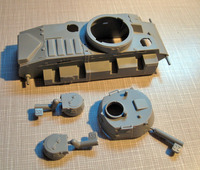
|
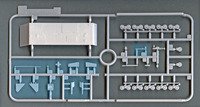
|
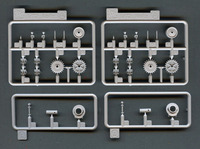
|
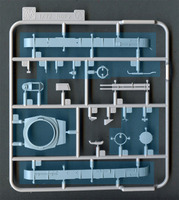
|
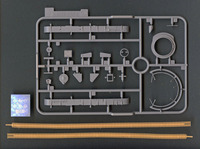
|
Late last year, Dragon delighted fans of interwar armor by releasing a 1/72 kit of Neubaufahrzeugs 3,4, and 5. Now they’ve released Number 1, with the round Rheinmetall turret, distinctive over-under main armament and towel rack radio antenna. The presentation and packaging is typical Dragon nice – sturdy top-opening box, attractive box art, and bagged sprues.
Instructions are well printed, with sprue diagrams, exploded views and color painting diagrams.
Crisply molded parts live on three main sprues and four smaller sprues, with the hull and turret parts molded and bagged separately. Since Dragon is reusing many parts from last year’s 3-5 kit, a number of unnecessary parts are included (highlighted blue in the parts photos).
Tracks are molded in one piece using Dragon’s glueable DS flexible plastic that - the instructions admit - might be too long or might be too short. A tiny, unnecessary decal sheet offers six Balkan crosses. MSRP is 20 bucks.
Modelers won’t be grumbling about this kit’s molding quality or level of detail. The hull and turrets stand out as beautiful examples of slide mold technology, and both cannon barrels are molded with hollow tips.
Dragon has made some design choices that will set off some griping:
- Though there is plenty of intricate detail molded as individual tiny parts, Dragon has again molded most of the pioneer tools onto the fenders. They even highlight this on the box – “Intricately molded on-vehicle tools.”
- Based on photos of the real thing and the 1/35 scale models, the four rectangular lumps on the rear hull should have been separate parts that stand a couple of scale inches off the hull deck. Intake covers perhaps?
- Hatches are molded shut, making life tough for the many small-scalers that like to add some figures to their teeny tanks.
- The main running gear is molded as one piece per side. This spares modelers a lot of finicky assembly, but means that the finished model will need to be displayed on a level surface instead of rough terrain.
Pre-War German Armor Colors
Dragon suggests two schemes for Nr. 1 – overall dark gray and a 3-tone scheme of dark gray, green and brown. Both are said to be from an “Unidentified Unit, 1938.” There are no markings on either suggested scheme, so the small decal sheet can head right for the stash.
This reviewer could only find a handful of photos of Nr. 1, and some of those were so murky as to make color guesses risky. The best photo of Nr. 1 clearly shows a 3-tone scheme, with soft demarcations indicating a spray job. Based on the well-documented research of Panzer gurus Thomas Jentz and Hilary Doyle, this is likely the “Colorful Pattern” in use from 1927 to 1938, with these three colors -
Erdgelb - Earth Yellow No. 17
Grün - Green No. 28
Braun - Brown No. 18
This Kfz. der Wehrmacht page offers a good summary of the scheme and the appropriate regulations. There are many sites on the Internet that attempt to make sense of the many color systems in the world, but none seem to address these pre-war German colors. The various armor modeling forums contain discussions of this pre-war scheme, but there doesn’t seem to be much agreement on the actual shades and appearance of the colors. After looking at many websites and photos, this reviewer settled on a couple of images that feel like a reasonable representation the scheme.
It’s wonderful to think that the 3-tone box in this forum is indeed painted with the actual colors. Using that box as a reference and keeping in mind the usual caveats about what a terrible job our computers do at representing color, here are representative color swatches (made with Word, on a Mac – perhaps these look quite different on your computer).
And, here’s a photo of a model that seems to capture the spirit of the scheme https://www.militarymodelling.com/news/article.asp?a=3691
Now, that other scheme. The Wehrmacht introduced a new, dark scheme in the summer of 1937 – 2/3 of the vehicle in Dunkelgrau Nr 46 and 1/3 Dunkelbraun Nr 45. In the November of 1938, new regulations insisted that all armor be repainted in the new scheme. Once again, Kfz. der Wehrmacht provides a good summary. So painting the Nr. 1 in that two-tone scheme is a reasonable approach, supported by the regs. And a repaint after mid-1940 would have been overall Dunkelgrau. Unfortunately, this reviewer can’t find any Nr. 1 photos that look conclusively dark. Even a photo purported to show Nr. 1 during a factory overhaul in 1939 or 1942 shows a finish that looks lighter than the black coveralls of the workmen.
But the real cat in the birdcage comes from a few fossil remains from one of the three tanks that served in Norway. During action against the British, one of these leviathans wandered into a swamp and got stuck. Unable to retrieve the beast, the Germans blew it up, and a few parts wound up in museum in Kvam. You can see them here – the relics start at Photo 6. Here’s a forum comment from a Norwegian armor modeler:
Trondg SAID
| Peter v B! My late father was at the site where one of the "Neubaus" was demolished in the walley of Gudbrandsdalen here in Norway in 1940. Some summers ago I got the opportunity to visit a tiny WW2-museum at Kvam. Here I could study some relics from the tank. (A climbing wheel). It was NOT panzergrau, but lighter, german field-grau. Have a nice building-evening! Trond in Norway. [:::] |
So, what schemes can you use on Nr. 1 ?
3-tone – Earth-yellow/Green/Brown – Solid choice
2-tone – Dark Gray/Brown – Reasonable choice
Solid Dark Gray – Maybe
Solid Feldgrau – Walk on the Wild Side!
Conclusion
Despite a few quibbles, this should build up as a very nice kit of a colorful and exotic subject. Here’s hoping that these kits fly off the shelves, so Dragon will release more exotic subjects. The T-35, please - It has even more turrets!
REFERENCES
-
Jentz, Thomas & Doyle, Hilary; Panzer Tracts No. 1-2-Panzerkampfwagen I; Panzer Tracts 2002
-
Ledwoch, Janusz; Neubaufahrzeuge; Wydawnictwo Militaria 1997
-
Scheibert, Michael; The Secret Beginnings of Germany’s Panzer Troops; Schiffer 1999
-
Sowodny, Michael; German Armor Rarities 1935 - 1945; Schiffer 1998

